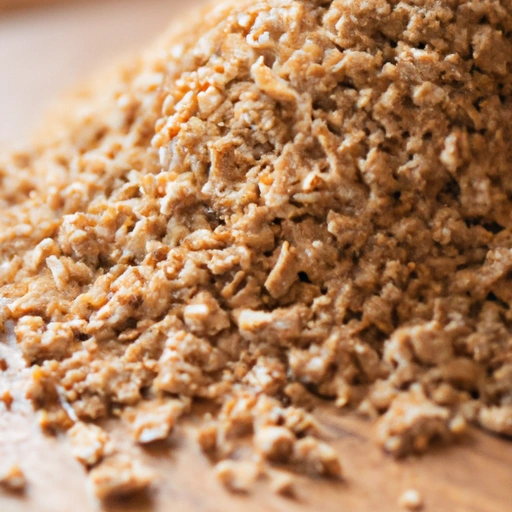Wheat Bran
Description

Wheat bran, the outer layer of the wheat kernel, is a high-fiber byproduct obtained during the milling process of wheat. Renowned for its nutritional benefits, wheat bran serves as an excellent source of dietary fiber and adds a nutty flavor and crunchy texture to various recipes. It is commonly used in baking and is a staple ingredient in many health-conscious diets around the world.
Common uses
Wheat bran is primarily used as a dietary supplement, a nutritious addition to baked goods, and a textural enhancer in various dishes. It is also a popular ingredient in breakfast cereals, granola bars, and muffins, and is often sprinkled on yogurt, oatmeal, and smoothies for an extra fiber boost.
Nutritional value
Calories
Approximately 125 kcal per 1 ounce (28 grams / about 1/4 cup).
Protein
Contains about 4.5 grams of protein per ounce.
Fat
Low in fat, with around 1 gram per ounce.
Carbohydrates
Consists of around 25 grams of carbohydrates per ounce, predominantly dietary fiber.
Vitamins
Rich in B-vitamins, particularly niacin, thiamine, and vitamin B6.
Minerals
Excellent source of iron, magnesium, phosphorus, zinc, and selenium.
Health benefits
Consuming wheat bran can aid digestion, promote gut health, and help prevent constipation due to its high fiber content. It may also play a role in weight management, lowering cholesterol, and regulating blood sugar levels.
Potential risks
While wheat bran is considered safe for most, it may cause adverse effects in people with gluten intolerance or celiac disease. An excessive intake of bran can also lead to digestive discomfort or interfere with the absorption of certain minerals.
Common recipes
Wheat bran is a versatile ingredient used in bran muffins, bran bread, pancakes, and cookies. It's also a common addition to meatloaf and casseroles to increase fiber content.
Cooking methods
Can be used raw as a topping or cooked within recipes. When baking, it's often mixed with flour to prevent a gritty texture.
Pairing with other ingredients
Pairs well with fruits, nuts, honey, and dairy products, enhancing flavors and textures in sweet and savory dishes alike.
Summary
Wheat bran is a nutritious food ingredient rich in dietary fiber, vitamins, and minerals. It has been used historically as animal feed but is now recognized as a valuable addition to the human diet. Wheat bran is versatile in the kitchen and offers numerous health benefits but should be consumed with consideration for potential dietary restrictions and digestive sensitivity.